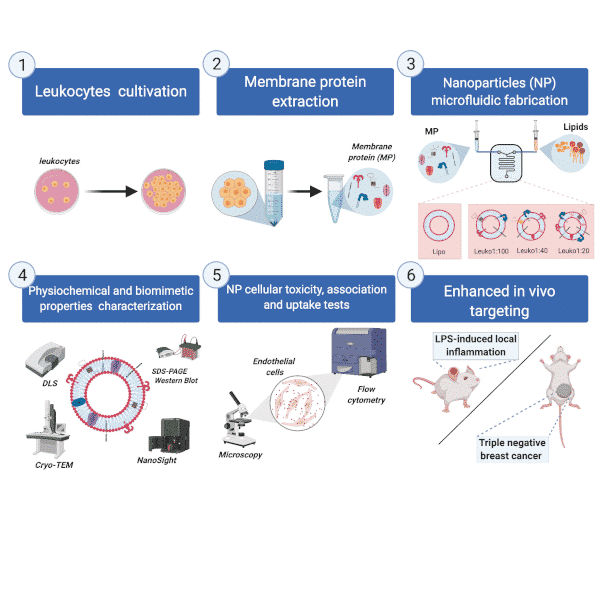
Enhancing inflammation targeting using tunable leukocyte-based biomimetic nanoparticles
2Houston Methodist Cancer Center, Houston Methodist Research Institute, USA
Biomimetic nanoparticles aim to effectively emulate the behavior of either cells or exosomes.1 Leukocyte-based biomimetic nanoparticles, for instance, incorporate cell membrane proteins to transfer the natural tropism of leukocytes to the final delivery platform. However, tuning the protein integration can affect the in vivo behavior of these nanoparticles and alter their efficacy. Here we show that, while increasing the protein:lipid ratio to a maximum of 1:20 (w/w) maintained the nanoparticle’s structural properties, increasing protein content resulted in improved targeting of inflamed endothelium in two different animal models. Our combined use of a microfluidic, bottom-up approach and tuning of a key synthesis parameter enabled the synthesis of reproducible, enhanced biomimetic nanoparticles that have the potential to improve the treatment of inflammatory-based conditions through targeted nanodelivery (Fig. 1).2
References:
1. Zinger, A., Brozovich, A., Pasto, A., Sushnitha, M., Martinez, J.O., Evangelopoulos, M., Boada, C., Tasciotti, E. and Taraballi, F., 2020. Bioinspired extracellular vesicles: lessons learned from nature for biomedicine and bioengineering. Nanomaterials, 10(11), p.2172.
2. Zinger, A., Sushnitha, M., Naoi, T., Baudo, G., De Rosa, E., Chang, J., Tasciotti, E. and Taraballi, F., 2021. Enhancing inflammation targeting using tunable leukocyte-based biomimetic nanoparticles. ACS nano, 15(4), pp.6326-6339.

Powered by Eventact EMS